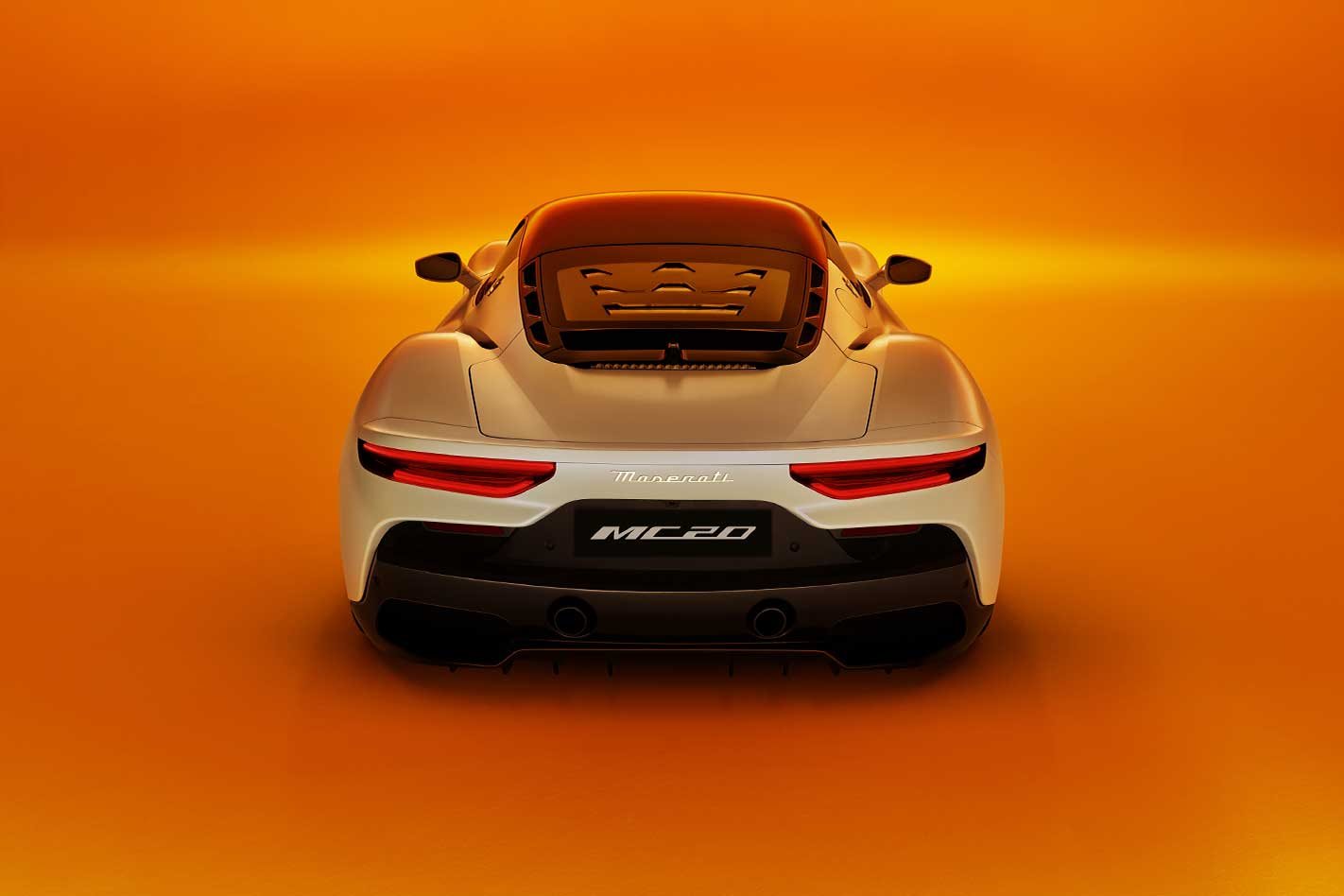Maserati has a plan. A new one. This one will work – it has to.
There’s a revamped factory at its Modena home, a wide-ranging electrification strategy, another SUV in the wings, the Fuoriserie personalisation program and, at the heart of it all, the new MC20 supercar.
Maserati, it seems, has rediscovered its identity.This identity was lost during the implementation of the previous five-year plan, announced at FCA’s Capital Markets Day in 2014.
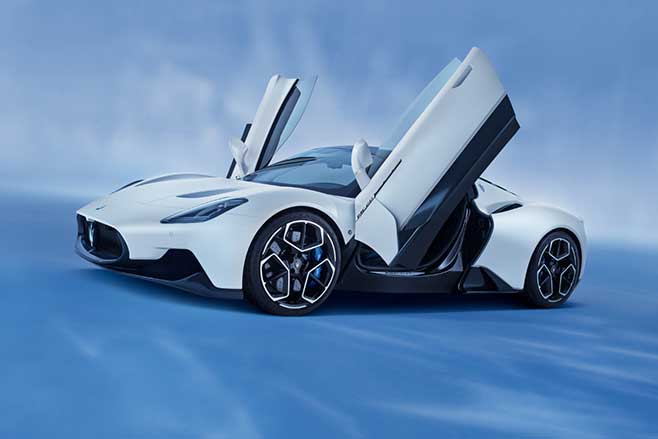
This awesome feature appears in MOTOR magazine – grab it now by subscribing at a great rate right here!
Initially, all seemed well: sales ballooned from 15,393 in 2013 to 36,448 in 2014 and continued to climb to 42,100 in 2016 and 51,500 a year later. This spike flattered to deceive.
Demand for the Ghibli and Levante dried up, the Alfieri project was canned and the promised new-generation GranTurismo never appeared, the previous version soldiering on as it had since 2007 before production finally ceased in December 2019.
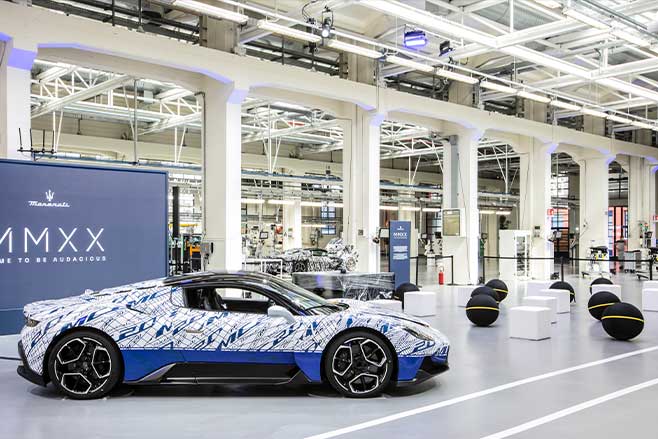
There’s even a new badge. The cessation of GranTurismo production enabled the historic Viale Ciro Menotti plant to be revamped in anticipation of the MC20, which will spearhead Maserati’s reinvigoration.
The evolution of the MC20
It’s Maserati’s first proper supercar since the Bora of 1971.
The MC12 that influences the name and styling of its successor was heavily based on the Ferrari Enzo, but the MC20 is deliberately and exclusively the work of Maserati – and its price may surprise.
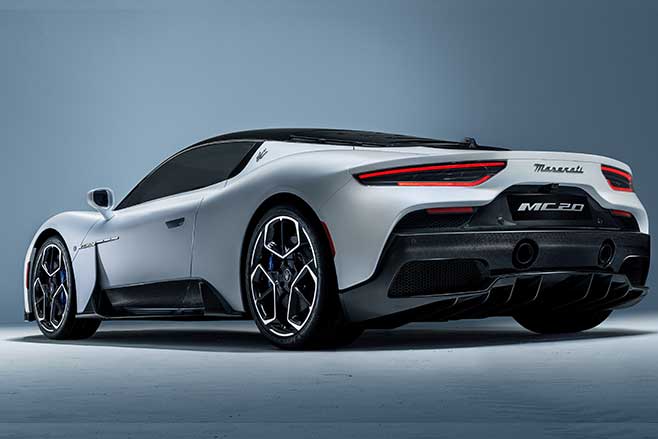
FCA sold its 80 per cent stake in the Prancing Horse as part of the latter’s public flotation in 2016 and Maserati is in the process of weaning itself off the Ferrari engine supply deal that has provided propulsion for the last two decades.
Key to that process will be the all-new 3.0-litre twin-turbo V6, dubbed Nettuno, that debuts in the MC20 and will spread throughout the Maserati range.
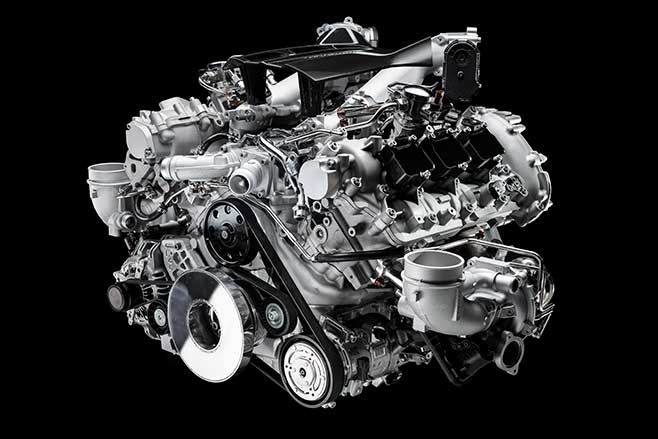
Inside the MC20’s Nettuno V6
Producing 463kW and 730Nm from just 2992cc, the Nettuno V6 has a spectacular specific output of 155kW/litre. It’s dry-sumped with an 11:1 compression ratio, a combination of port and direct injection and a turbocharger hanging off each cylinder bank.
So far, so good, but where the Nettuno changes the game is its use of pre-chamber ignition. While not a new concept, this is the first modern application in a petrol-powered production car.
Pre-chamber ignition is one solution to the problem posed by forthcoming emissions regulations that will force manufacturers to use ideal or ‘stoichiometric’ 14.7:1 air-fuel ratios.
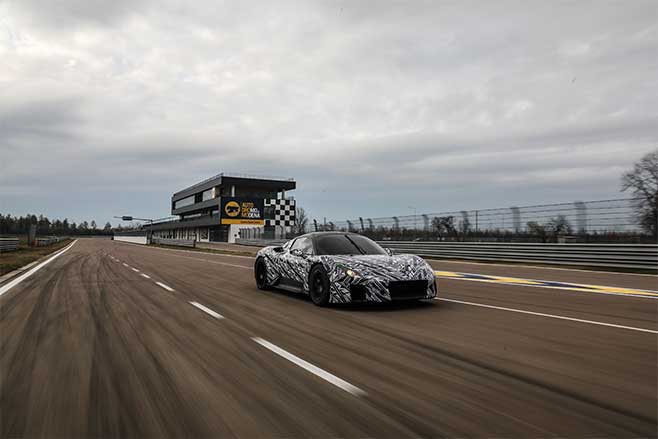
Deprived of this, engineers need to get clever. The tiny pre-chamber (about 1.5cc) incorporates a second spark plug and sits above the cylinder.
As the piston compresses that ideal fuel-air mixture is forced into the pre-chamber, the second spark plug ignites and the mixture is burned quickly and completely: good for power, good for emissions.
Maserati claims the pre-chamber system is worth around an extra 95kW/130Nm while also reducing fuel use by three per cent, but there are drawbacks.

While great for full-throttle power, keeping the engine stable at low load, by far the most common scenario for a road car, is very difficult and having a spark plug firing in such a small, enclosed space generates enormous heat.
Problem one was solved by installing a traditional combustion system that works in conjunction with the pre-chamber ignition at low loads, while specific cooling channels surround the pre-chamber.
Cost is also an issue.
“Because we need six extra spark plugs on six cylinders, six extra coils to activate the plug, more wiring, component numbers increase,” says Ettore Musu, Maserati’s head of powertrain innovation
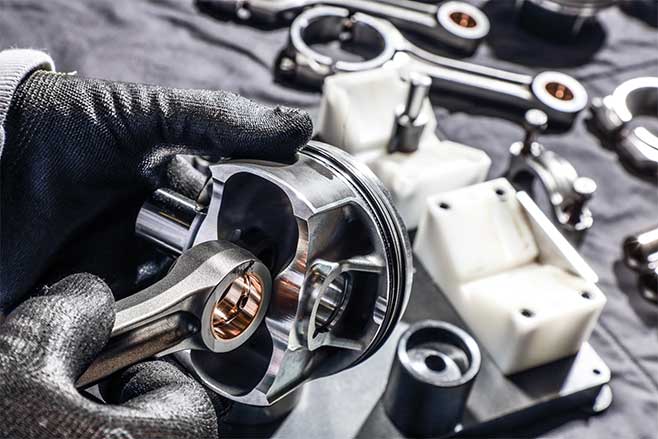
In an industry where carmakers fight for every cent, that’s a huge amount.
How fast is the Maserati MC20?
The investment is worth it: the Nettuno revs to 8000rpm and develops peak power at 7500rpm. It’s attached to an eight-speed dual-clutch gearbox and rockets the MC20 to 100km/h in 2.9sec and 200km/h in 8.8sec.
This gives a second away to the likes of the McLaren 720S and Ferrari F8 Tributo but is still hair-raisingly quick by any standard. Top speed is “over 325km/h”.
But this isn’t the fast one. There will be three variants of the MC20: this coupe, a Spyder with a retractable hardtop and an all-wheel-drive, all-electric version that will be the real trident missile.
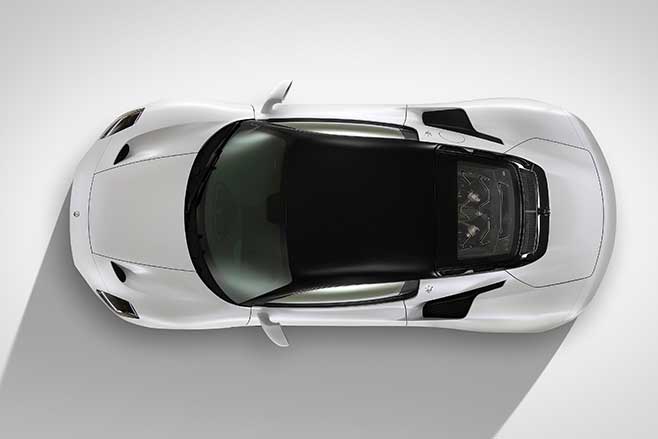
Maserati’s electric future
An 800v electrical system will allow 300kW charging (Tesla’s current fastest supercharger is 250kW) while a tri-motor setup will enable four driven wheels and independent control of each rear wheel.
All Maserati’s battery needs will be catered for by the Mirafiori battery plant in Turin and its EV supercar won’t be a silent drive, the brand saying even its electric models will have “a unique, distinctive growl.
“After all, anyone on board a Maserati must hear the unmistakable sound of its engine,” says the company. Even if it doesn’t have one.
Light, fantastic for the MC20
All MC20s use a common carbon fibre monocoque designed in collaboration with Dallara but the construction of each variant’s differs.
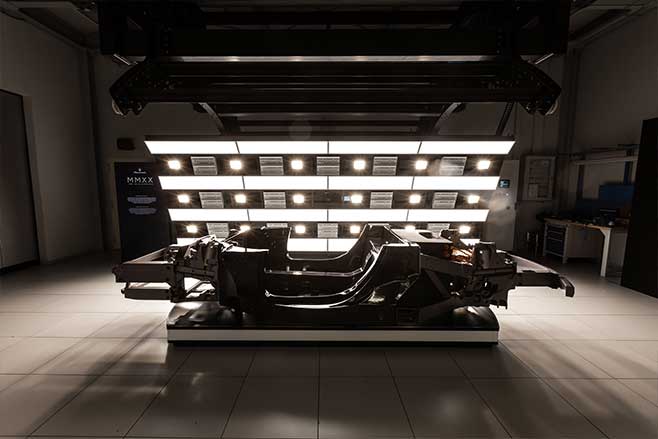
Weight is claimed to be less than 1500kg, with that weight controlled by double-wishbone suspension with adaptive dampers, while the 20-inch rims wear 245/35 tyres at the front and 305/30 at the rear.
Somewhat unusually for this segment, the MC20 wears Bridgestone Potenza rubber, rather than the more common Pirellis or Michelins.
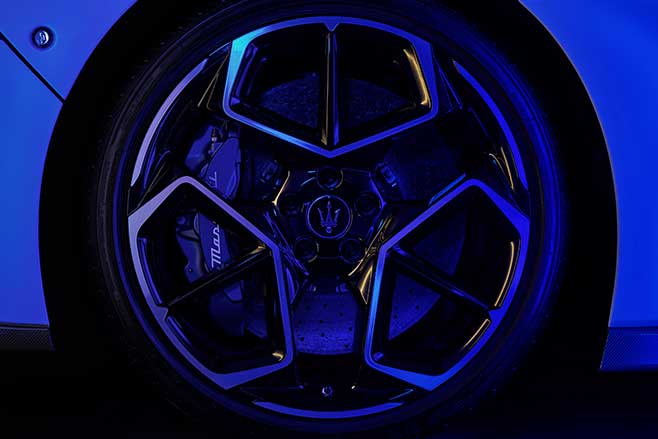
Operated by Maserati’s chief test driver, highly accomplished GT racer Andrea Bertolini, the simulator uses nine actuators that gives its upper platform three degrees of movement and the lower platform six in an attempt to replicate a vehicle’s dynamics and the whole thing is isolated on a very thin cushion of air.
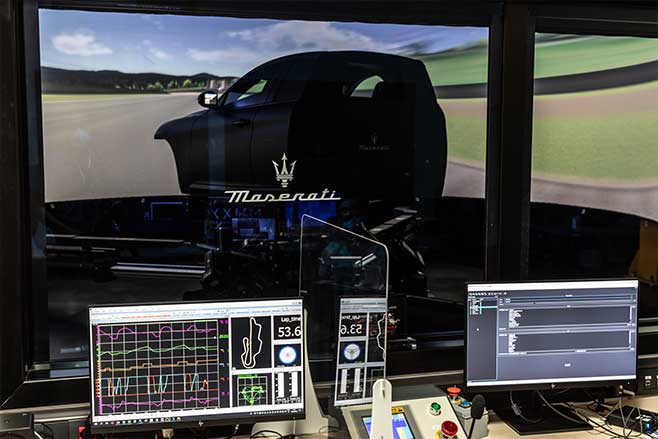
Maserati claims this approach results in a 50 per cent reduction in time-to-market and 40 per cent fewer physical prototypes.
It certainly speeds up the development process.
Vehicle Line Executive Federico Landini uses the example of the Levante SUV, for which virtual development was used minimally, testing three physical steering racks would typically take three days.
Maserati now uses those three days to test 50 virtual steering racks, each change completed with a few clicks and the same goes for tyre compounds, aerodynamics, suspension settings and more.
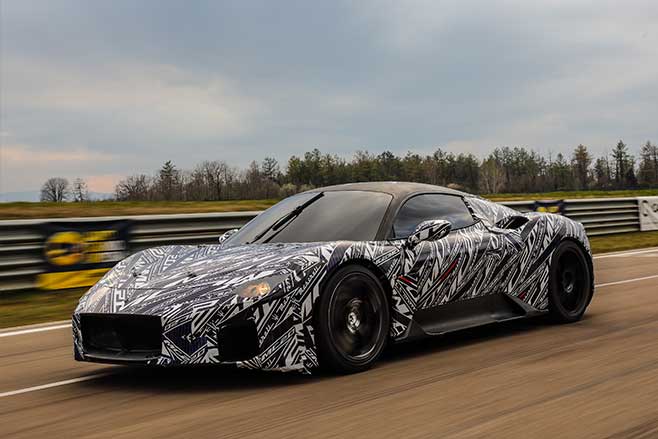
Aerodynamics of the MC20
Aerodynamics played a crucial role in shaping the MC20, both dynamically and stylistically. By generating all the downforce from the lower section of the body, (represented by naked carbon fibre) and the floor, the engineers gave design chief Giovanni Ribotta and his team flexibility with the upper surfaces, free from the need to add aerodynamic devices.
Vortex generators shape the underbody airflow through the fully enclosed floor where it is removed by ducts, fed into intakes or forced through the diffuser, the result of over 2000 hours in Dallara’s wind tunnel and over 1000 CFD simulations.
Ribotta: “The form is very pure in the upper part of the car because all the aerodynamic load is generated by the underside. This was a great advantage for us in terms of styling, it meant we could avoid aerodynamic appendages that would have detracted from its style.”
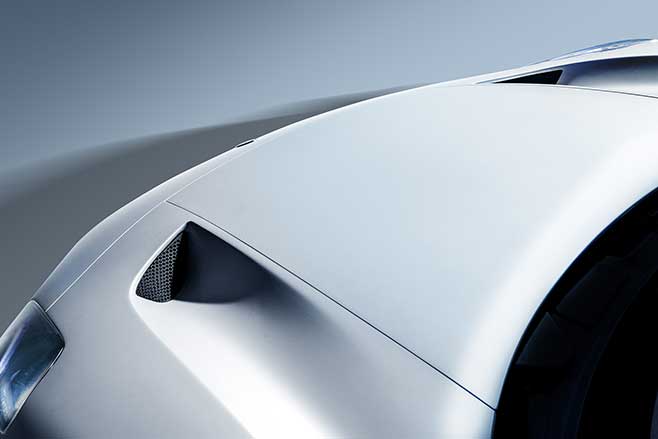
The ‘gentleman’s brand’ defined
Compared to its creased, confident supercar competitors, the MC20 looks simple and perhaps a bit plain, particularly in its ‘Bianco Audace’ launch colour, but that remains true to Maserati tradition.
Back in the 1970s, Italdesign issued a press release following its styling of the Bora saying: “The brief called for a car that was modern but devoid of the exotic look that unnecessary decorations can create, strikingly sporty but not inordinately aggressive.” The release could equally describe the MC20.
The interior is minimalist in its design but drenched in Alcantara and carbon fibre, the materials deliberately dark to minimise reflections. A pair of 10.25-inch digital displays handle the instrument and infotainment duties while the rear-view mirror is digital.
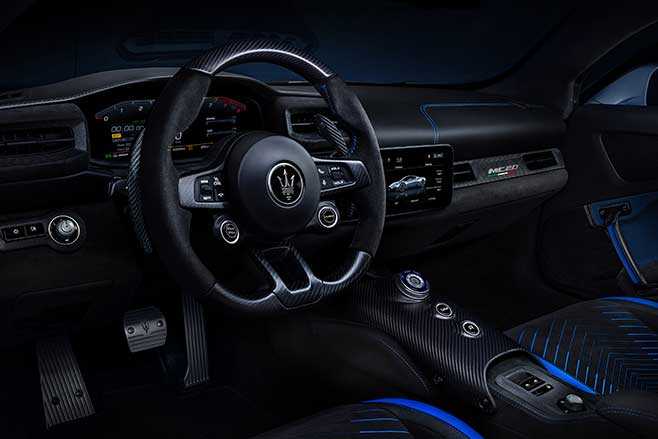
As with Ferrari, a separate button in the middle allows the suspension to be softened independent of the drive mode selected.
Nanometer-perfect
No jibes about Italian build quality, either. Each MC20 is inspected after assembly and its dimensions compared to the Mountability Master, an MC20 custom-built as precisely as possible, the acceptable deviation 400 nanometers (0.00004mm).
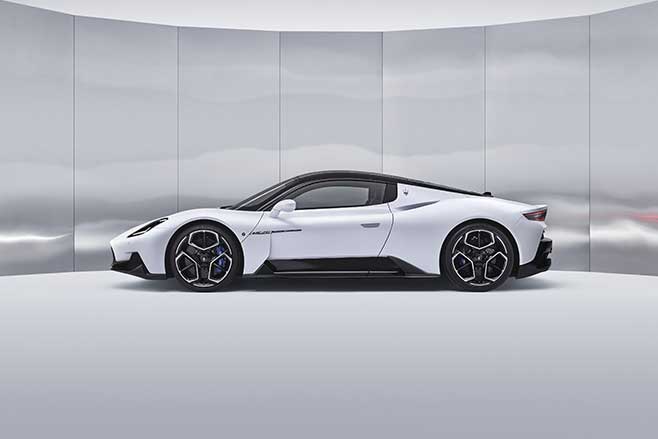
Another set of robotic arms, meanwhile, performs three-dimensional scans of the body and compares the results to the original CAD drawings.
The final inspection is a human one by the quality control staff.
The price of the Maserati MC20
At $438,000 the MC20 enters a crowded supercar segment with a presence that sets it just a little bit apart from the pack.
While it’s in direct competition with cars like the Audi R8, the Lamborghini Huracan, and the Porsche 911 Turbo, it can be regarded in the same breath as more fancied opponents like the $485,000 Ferrari F8 Tributo.
Not that it matters, as Australia’s initial allocation is all spoken for. The plan, for now, is working.
This awesome feature appears in MOTOR magazine – grab it now by subscribing at a great rate right here!


